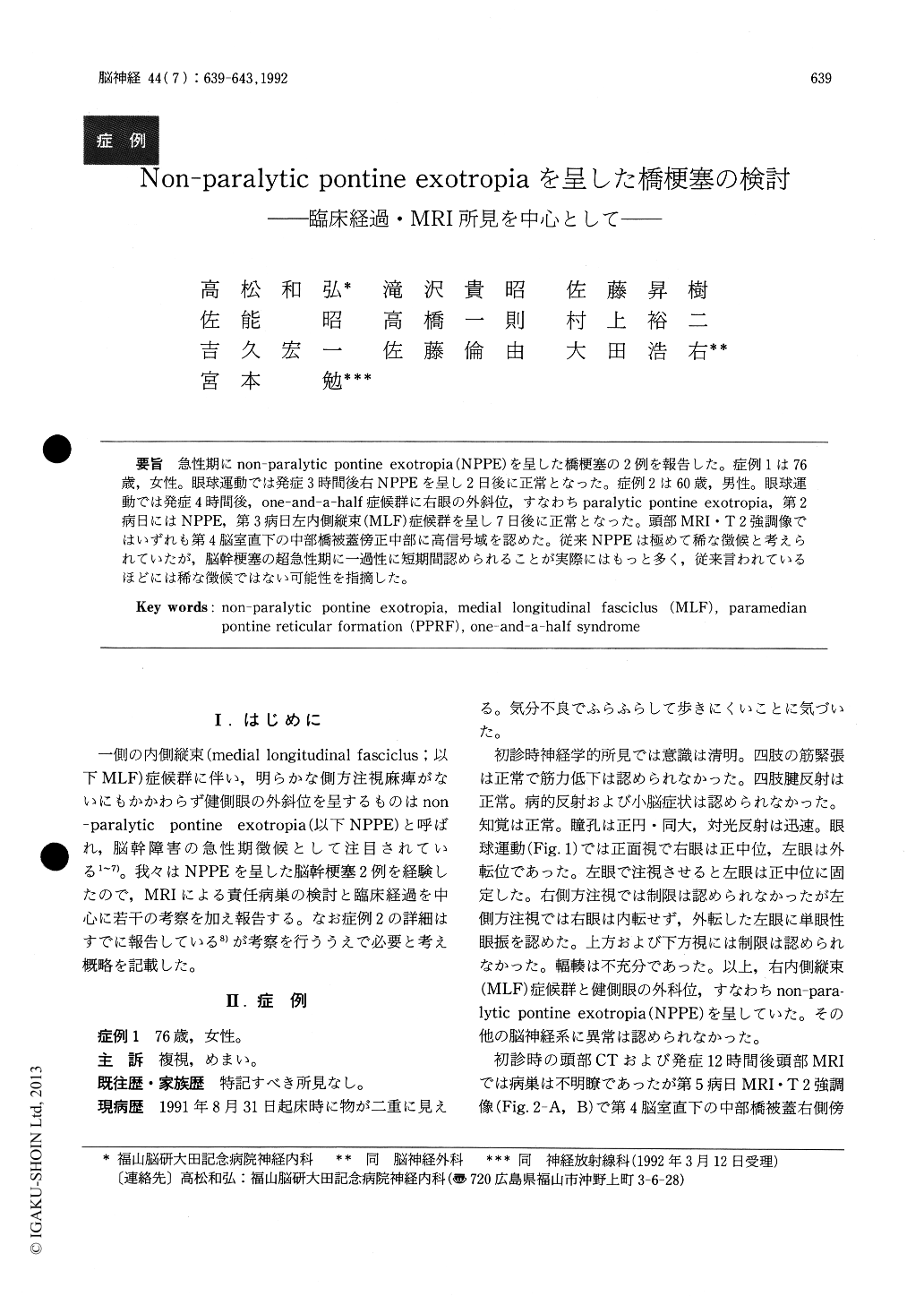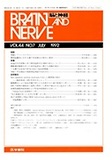Japanese
English
- 有料閲覧
- Abstract 文献概要
- 1ページ目 Look Inside
急性期にnon-paralytic pontine exotropia(NPPE)を呈した橋梗塞の2例を報告した。症例1は76歳,女性。眼球運動では発症3時間後右NPPEを呈し2日後に正常となった。症例2は60歳,男性。眼球運動では発症4時間後,one-and-a—half症候群に右眼の外斜位,すなわちparalytic pontine exotropia,第2病日にはNPPE,第3病日左内側縦束(MLF)症候群を呈し7日後に正常となった。頭部MRI・T2強調像ではいずれも第4脳室直下の中部橋被蓋傍正中部に高信号域を認めた。従来NPPEは極めて稀な徴候と考えられていたが,脳幹梗塞の超急性期に一過性に短期間認められることが実際にはもっと多く,従来言われているほどには稀な徴候ではない可能性を指摘した。
We report two patients with brainstem infarction who presented non-paralytic pontine exotropia (NPPE) in acute phase. Case 1 was a 76-year-old woman. NPPE observed 3 hours after the onset disappeared two days later. Case 2 was a 60-year-old man. Paralytic pontine exotropia was observed 4 hours after the onset of his stroke. NPPE was noted on the next day and left medial longitudinal fasciculus (MLF) syndrome was still present on the third day. Seven days later, the disturbances of ocular movement was disappeared. T2-weighted cranial MRI showed high signal intensity lesions in the paramedian portion of the mid-pontine teg-mentum beneath the fourth ventricle in both cases.
Although it has been thought that NPPE is a rare clinical symptom, we think that NPPE is by no means a rare symptom in the acute stage of brain-stem infarction.

Copyright © 1992, Igaku-Shoin Ltd. All rights reserved.


